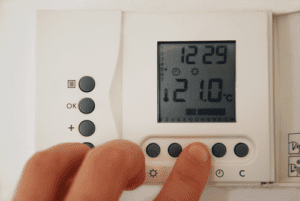Heating your home is just as important as cooling it, and when the weather outside becomes chilly, your central heater will likely be your best friend. However, if you are in the process of choosing new central heaters for home use, you may have questions about which models are best for your purposes. You aren’t alone. In fact, many people have questions about the most common central heaters for home use and aren’t sure what to purchase for themselves. If you are trying to gain more information about the kinds of central heaters that people in the United States depend on above all others, just keep reading this article. We’ll cover the most common types of central heaters for home use in detail and provide useful information about each so that you can make an informed choice for your own needs.
The Most Common Types of Central Heaters for Home Use in the United States:

The following are some of the most commonly used central heaters in the USA. Each type of machine can have distinct advantages and disadvantages depending on your needs. Familiarize yourself with each of these technologies so that you can choose a central heater with which you will be satisfied.
- Forced Air
Forced air heaters account for most of the heaters used in home HVAC systems. They function by heating air within a furnace and then distributing it throughout a home via a series of ducts. The air passes out of the ducts and into your home via a system of registers, and return vents carry treated air back into the system so that it can be recycled and used again.
Forced air systems offer numerous advantages over many other types of heating systems, which is probably why they are so widespread. Because they can be packaged with cooling systems in a standard HVAC, they represent the only distribution system that can also be used to cool the air inside a given space. They also allow this air to be filtered, and for humidity control for maximum comfort. Additionally, forced air systems are among the least expensive to operate provided they are maintained correctly. If you join most of America in purchasing a forced air heating system for your home, ensure that you know of reliable and licensed contractors in your area who will be able to provide the maintenance you need to keep it running in a cost-effective way. This may involve regular duct cleaning every 2-5 years.
- Radiant Heat
Radiant heat differs from forced air in that it does not require air distribution throughout your home via ductwork. Instead, radiant heat works by naturally transferring heat from hot surfaces to cool ones—such as your walls and floors.
Radiant heat often uses hot water tubes that heat up tiles beneath the surface of your floor, although they may also be placed in the ceiling. The primary advantage of radiant heat is that it often feels more natural and comfortable than many other forms of heat. However, radiant heat systems are more expensive to install than many other heating systems, and if you want air conditioning in your home, you will have to use a separate system of ducts for it.
- Hydronic
Hydronic systems are similar to (but ultimately distinct from) radiant heat systems. Like most radiant heating systems, they use hot water to facilitate a heat transfer. However, unlike radiant systems that run tubes under surfaces to transfer this heat into them, hydronic systems use baseboards that contain water heated by a boiler.
Hydronic systems tend to be quiet, unobtrusive, and fairly energy efficient. However, depending on baseboards for your heating can cause problems if your home has furniture or drapes that may block them. Hydronic baseboards also take a long time to heat up, which means you may have to wait for the comfort you want—and, like all other systems besides forced air, they require separate ductwork for air conditioning.
- Steam Radiant
Steam radiators are almost never used anymore, except in particularly old buildings. Although they are efficient and quick to warm spaces, they are also somewhat unsightly (unless you love nostalgia for its own sake) and they may not be used for cooling.
- Geothermal
Geothermal heat pumps use ground loop pipes to move heat from the ground into your home and can also run in reverse to provide a certain level of cooling during the summer. However, the extremely high up-front cost of these systems makes them difficult for many homeowners to purchase.
Choose the Central Heaters that are Right for Your Home
Finding central heaters for home use is easier when you know exactly what kind will suit your purposes best. Use this guide to determine what will accommodate your needs and resources—and be sure to call experienced professionals for more information if you ever need it.
Check with us here at Valley Comfort Heating and Air, our customers love our attention to detail and our friendly, affordable service. (707) 539-4533
